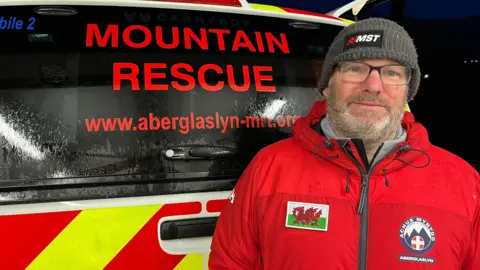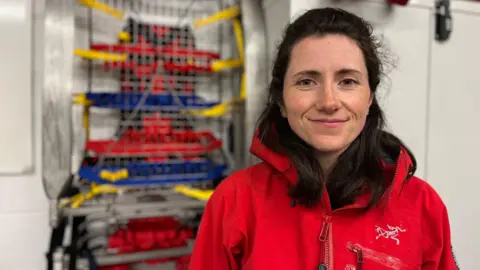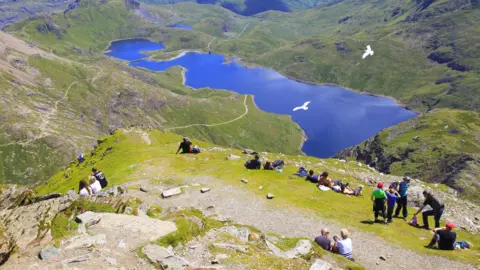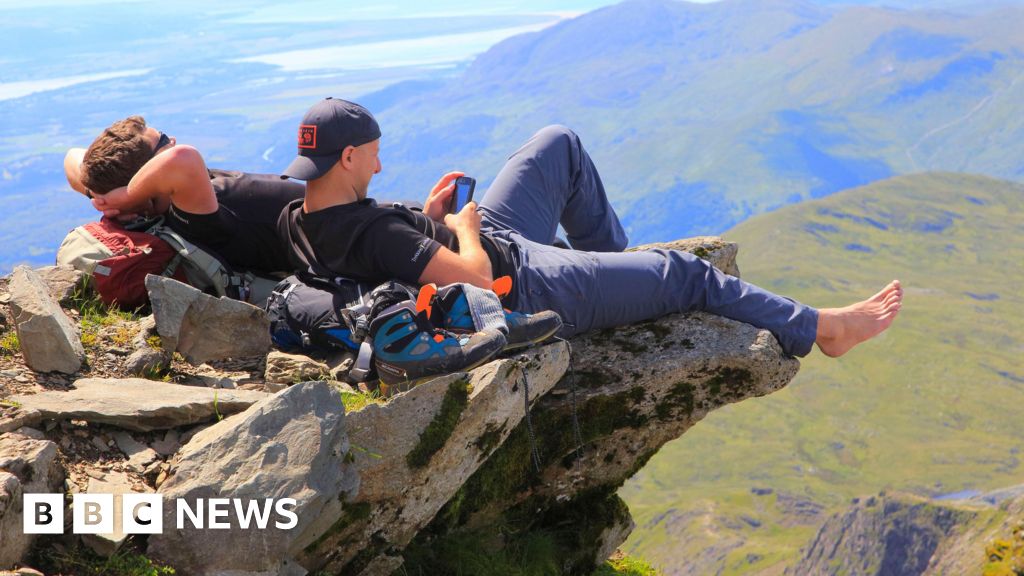 Getty Images
Getty ImagesWalkers in north Wales have been urged to stay safe when out walking this Easter weekend.
The Aberglaslyn Mountain Rescue Team, who cover parts of Eryri, also known as Snowdonia and the Llyn Peninsula, said “the calls have increased, no doubt” in recent years.
It comes after a spike in the number of young people needing to be saved, according to research by Ordnance Survey.
Dion Jones, who has been with the team for about 30 years, urged those who were heading for the hills this weekend to be prepared.
Mr Jones, 56, used to get about 10 calls a year when he started volunteering.
Now the figure has shot up to “at least 60 to 70 a year” as more visitors come to the area.
The team, based in Porthmadog, Gwynedd has over 30 volunteers and provides a search and rescue service across north west Wales.
He recognised that accidents can happen to anyone, but said there were people “who haven’t prepared”.
“Many don’t take the right equipment with them and don’t check that they know what they are doing beforehand,” he said.

Mr Jones said regular mountain safety notices were published, but he was concerned they were not reaching everyone.
“We have to look at where the people come from, and make sure that the safety messages are shown in those areas rather than just locally,” he said.
He added “the pattern follows holiday time,” and “because more people are coming here”.
These services rely entirely on its volunteers which means the increased call-outs were putting pressure on resources.
“We do so much more than mountains,” Mr Jones added.

Max Swinhoe, 36, has been with the team for two years.
She typically gets called out “a couple of times a week” but said it was impossible to predict.
“I think a lot of people think that we are sitting here at the base but we’re not,” she said.
“We’re just normal people and we drop everything to come out.”
Ms Swinhoe agreed that people were not always prepared for the “changeable” conditions.
“If you aren’t aware of that, you could be caught short without the right gear,” she said.
Ms Swinhoe said the key was to educate people “that anything can happen”, adding: “Even if it’s a warm day you can still succumb to hypothermia.”
 Getty Images
Getty ImagesRescues jumped by 24% between 2019 and 2024 in Wales and England, according to data analysed by Ordnance Survey and reported by The Guardian.
The rise was most prominent among the 18 to 24 age group, where rescues almost doubled.
Mountain rescue teams said this was partly down to beauty spots finding fame on social media sites such as TikTok and Instagram.
An adventurer went viral in August last year for camping on a clifftop at the top of an Eryri mountain.
Tourists were also urged to research and respect the Bannau Brycheiniog National Park after it became one of the most “Instagrammable” locations in Wales.
The chief executive of Mountain Rescue England and Wales, Mike Park, said that a “wider variety of society” were now enjoying the outdoors.
“They’re following influencers and social media to go to places because other people have done it,” he said, adding the issue was not “where they’re going” but rather the “journey to get there”.
He said: “Take an infinity pool as an example. I know how to swim, I know where this pool is, I’ve got my swimming costume.
“But we’re still thinking this is the same as if I was going down to the local swimming baths.”
Mr Park added that people did not always take into the account the “dangers” when travelling to the location.
“It’s cold up there, you’ve now got this big journey to get back and that’s when we’re seeing the accidents happen,” he added.
What can people do to prepare?
Mr Jones said “start early enough” to ensure there was enough daylight for the return leg and consider rescheduling if the weather was unpredictable.
“Wear suitable clothes, bring food, drink, a torch with a spare battery, a map, a compass – and also make sure you know how to use them,” he said.
“Getting to the top is only halfway. You must come back down.
“That’s what’s most important – to come back down in one piece.”

